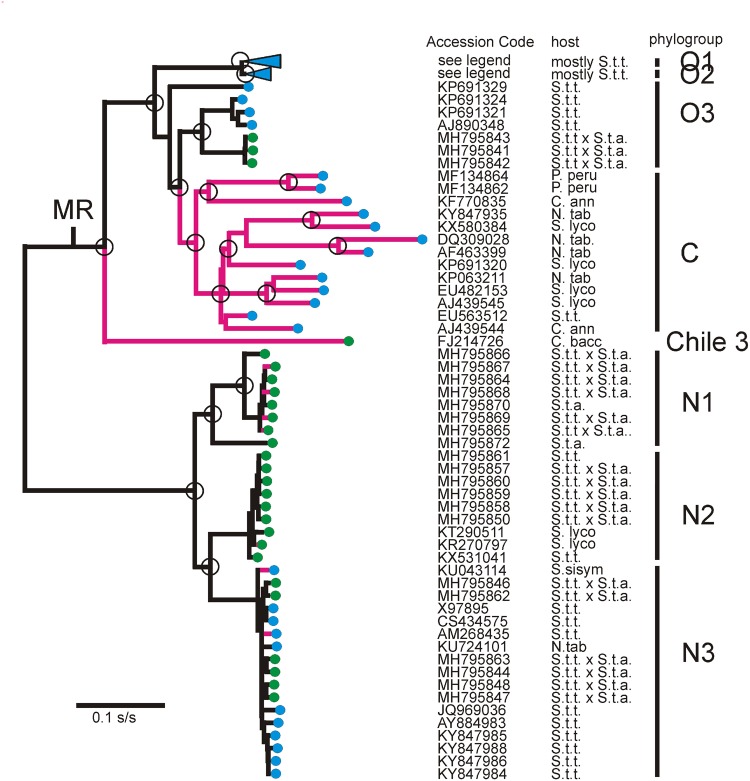Figure 3.
A phylogram illustrating the ML relationships of the 190 non-recombinant ORFs of the N, C, and O phylogroups shown in Fig. 2d. Most O isolate branches were collapsed to their two basal branches (blue triangles), the upper one (O1) represents 125 sequences and the lower (O2) 11 sequences; their Accession Codes are given in the Supplementary Material. The red branches show the isolates that contributed large ‘residual’ variances to TempEst analyses, and were removed to form the 162 dated ORFs dataset (Fig. 2e) for BEAST analysis. The tree was drawn with the midpoint root (MR) positioned so the major O and N phylogroup clusters fell on the same region of the X-axis (see text). Isolates collected in South America are marked with green disks, and those from elsewhere in the world are blue. The abbreviated host names: C. ann., Capsicum annuum; C. bacc., Capsicum baccatum; N. tab., Nicotiana tabacum; P. peru., Physalis peruviana; S. lyco., Solanum lycopersicum; S. sisym., Solanum sisymbriifolium; S.t.t., Solanum tuberosum ssp. tuberosum; S.t.a., Solanum tuberosum ssp. andigena; V. vin., Vitis vinifera.

